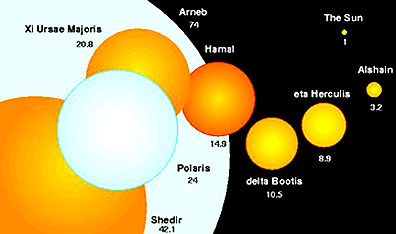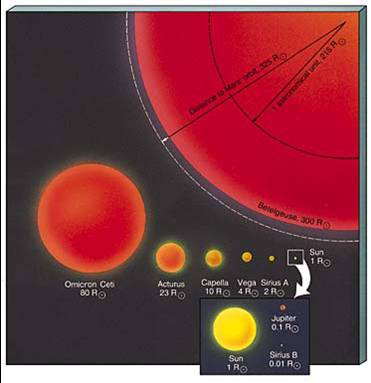Introduction to Stars

http://www.cnn.com/TECH/space/9904/02/tarantula.nebula/
Stars are phenomenal glowing spheres that everyone has noticed in the night sky. Long ago they were poorly understood. Today, with the help from astronomers, physicists, and other space scientists, we have discovered a large amount of information about stars.
These huge balls of flaming gas have many different ranges of characteristics. From the above picture, we can observe the many fascinating colors that may be displayed from stars. Some of them are not stars themselves, but the trillions of fragments left behind after they explode into supernova (Moreau, 2000).
Color Temperature Example Constellation Blue-White 36,000 F and up Rigel Orion White 20,000 F Vega Lyra Yellow-White 11,000 F Capella Auriga Orange 7,500 F Arcturus Bootes Red 5,500 F Antares Scorpius http://www.kidscosmos.org/kid-stuff/stars-facts.html
As we examine the chart above we can infer that the surface temperatures of stars are related to their color. Given are the approximate ranges of temperatures on the surface of a star. From each range, there is an example star given with its corresponding constellation.
There is a huge variation in sizes of stars as well. They range from super giants to small dwarfs. Most often their sizes correlate to their age or the particular cycle they are beginning to progress into. For example, a star that is much older may be progressing into the stage before it undergoes supernova. Before it becomes a supernova it greatly expands. However, some stars are naturally very massive. We can see from the below pictures the huge ranges of stars. Both pictures depict how miniscule our own sun is compared to some of these giants.
http://rst.gsfc.nasa.gov/Sect20/diam2x.jpg http://www.astro.psu.edu/users/rbc/a1/Lec11.ppt#9

